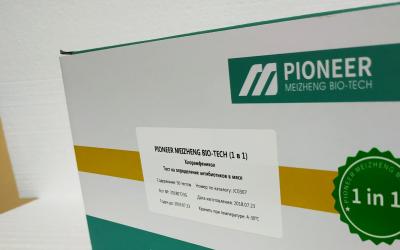It is easier to prevent than to neutralize: the danger of fusarium blight on wheat

The causative agent of fusarium is a fungus of the genus Fusarium. it affects wheat during the flowering period, since during this period the plant is most vulnerable. On average, wheat blooms from one to two days. But in case of rainy weather this period increases. Accordingly, the risk of infection increases. Sometimes this time is enough for the entire crop to be destroyed.
Experts agree that fusarium is easier to prevent than to neutralize. Fungus can be described as dry rot of a plant. At the same time, the spikelet scales darken and become more oily. The ear becomes covered with a coating of harmful spores.
— Signs of fusarium appear only at the time of grain ripening. The fungus may not affect the grain too much, and in this case it penetrates the seed coat. With a more serious lesion, the deep layer is damaged, say specialists from the Altai branch of the FSBI Center for Grain Quality Assessment.
Wheat grains with fusarium also have distinctive features. They become colorless, sometimes with a pink tint. The surface wrinkles, and a coating of fungus appears in the groove. The grain becomes brittle and the embryo dies.
The main causes of fusarium include poor soil cultivation and contaminated seed material. Infected seeds will not germinate, but may spread the spores. That is why before planting, the seed must be treated with multicomponent fungicides. This will prevent the development of spores and protect the seeds from contamination in the soil.
When preventing fusarium disease, you need to take a responsible approach to the choice of wheat variety, based on the data of what grew on the field before. For example, if you previously grew corn, only certain varieties of wheat that are more resistant to the fungus are allowed to sow. At the same time, there are no varieties that are absolutely not susceptible to fusarium.
Fungal spores survive winter comfortably on plant debris. Therefore, you should be responsible for cleaning the field, and plant residues should be plowed. In this case, the fungal pathogens will die in about a month, which will reduce the risk of crop contamination.
To avoid Fusarium infection of the crop , specialists from the Altai branch of the “Grain Quality Assessment Center” recommend:
- requesting wheat certificates from the supplier when purchasing seeds;
- request seeds for testing (in this case, you can submit the material to the laboratory yourself and get an independent result);
- treat new seeds with fungicides (this will be the first stage of protection);
- take measures to prevent contamination of grain with fusarium, since in the future any fight against it will be unsuccessful.
If infection is detected, cleaning should be done separately. Next, based on a random sample, the percentage of fusarium in each batch is determined. It is worth noting that for food purposes, wheat grain with a fusarium content of up to 1% is accepted.
Source: Altai branch of the Federal State Budgetary Institution “Grain Quality Assessment Center”
Read together with it:
- В Башкортостане произвели 83 тысячи тонн сахараЧишминский сахарный завод и компания «Раевсахар» продолжают переработку свеклы урожая 2025 года. К 24 октября предприятия переработали более 606 тысяч тонн сахарной свеклы, произвели 83 тыс. т. белого сахара. Это в полтора раза выше чем за этот же период прошлого года. «Сегодня производительность заводов превышает 12 тыс. т. корнеплодов в сутки. Такой мощности предприятия достигли благодаря реализ...
- В Подмосковье исследовали уже более 340 тысяч тонн зерна урожая 2025 года: почти вся пшеница соответствует ГОСТВ лаборатории филиала ФГБУ «ЦОК АПК» по городу Москве и Московской области завершается государственный мониторинг качества зерна нового урожая. С начала уборочной кампании специалисты исследовали 341,3 тысячи тонн пшеницы – это почти 80% от всего валового сбора зерна в Подмосковье. Как уточняют в Министерстве сельского хозяйства и продовольствия Московской области, в лабораторию поступило 448 обра...
- Московская область демонстрирует рост урожая зерновых, картофеля и овощей в 2025 годуВ Московской области отмечается положительная динамика по валовому сбору ключевых сельскохозяйственных культур. Значительно увеличены показатели по зерновым и зернобобовым, картофелю и овощам. В Министерстве сельского хозяйства и продовольствия Московской области сообщают, что валовой сбор зерновых и зернобобовых культур составил 592,2 тыс. тонн, что на 89,9 тыс. тонн или 18% превышает показатель ...
- Transbaikal farmers are actively implementing digital technologies in their production activities.Agricultural producers in Transbaikalia are annually increasing their use of modern technologies related to data collection, storage, and processing systems. Applications for subsidies are also being successfully submitted electronically, reported Albina Koreshkova, HEAD of the regional Ministry of Agriculture. "Every year, Transbaikalia's farms are increasingly using digital technologies to monit...




























































